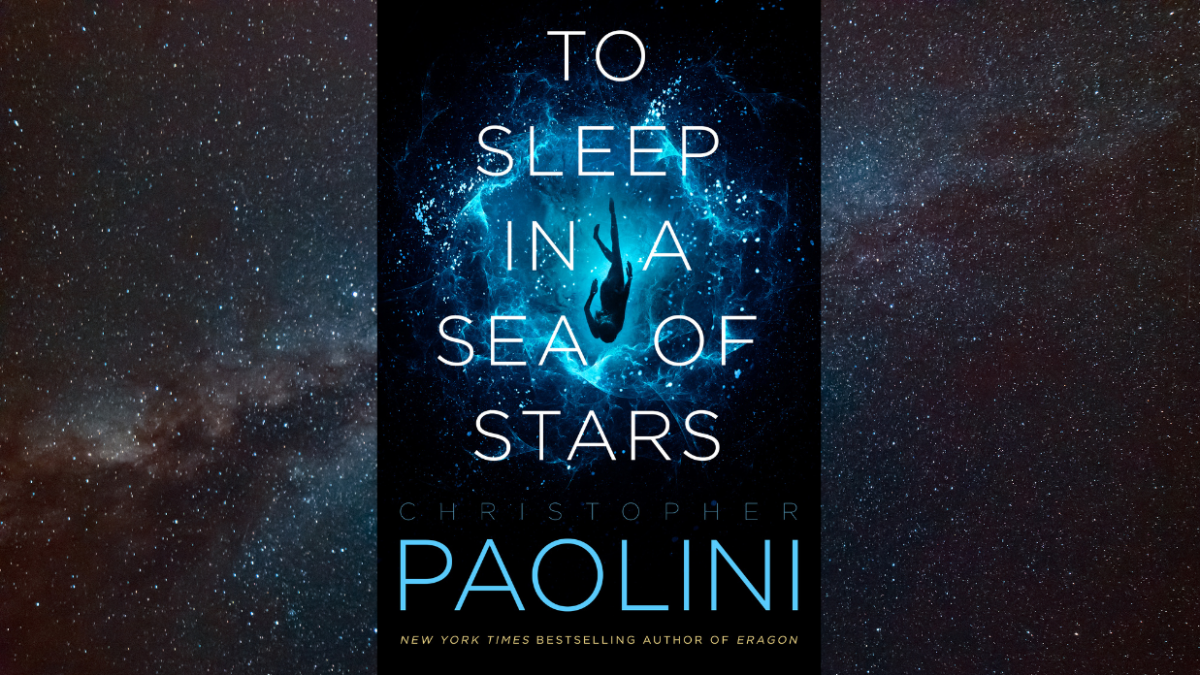To Sleep in a Sea of Stars: Meet Christopher Paolini’s Epic New Space Opera
Christopher Paolini's To Sleep in a Sea of Stars gives the full science fiction series experience without the waits.

This post is sponsored by 
To Sleep in a Sea of Stars is the science fiction debut from Christopher Paolini, the best-selling author of Eragon (“The Inheritance Cycle” series). The story follows xenobiologist Kira Navárez as a chance encounter with an ancient, alien artifact propels her into an epic space adventure across the vast expanse of the galaxy, in a fight for the fate of humanity. The book, Paolini’s first full-length novel in nine years, is an enthralling space adventure with high concepts and even higher stakes. It’s well-written, well-paced fun, and a satisfying read beginning to end.
Unlike much of what is on storytelling offer right now, Paolini’s novel offers an optimistic vision of humanity’s potential. It depicts a future where humans spread out across the stars, and in doing so, move beyond the arbitrary differences that plague our real-world existence. Race, gender, and sexuality have no obvious hierarchy, and if value is placed on these things, it is not immediately apparent in the story. Further, characters are allowed to have distinct racial, sexual, and religious identities, doing away with the idea that conformity and sameness is the only way toward peaceful coexistence.
What is apparent in To Sleep in a Sea of Stars world is that humanity has yet to evolve past its need for the structures of governance that create oppressive divisions among it’s populace, wherever they may be in the galaxy. Humans may be beyond most of the present-day prejudices and -isms, but the class system that assigns value to people based on where they’re from or where they live does exist. We get glimpses of this when characters talk about Earth, and the other planets that revolve around Sol. It seems that proximity to the homeworld is a measure of status: the closer you live to it, the more power and wealth you’re likely to possess.
Still, humanity has moved far enough beyond its petty hangups to collaborate, and people from throughout colonized space work together to perpetuate the spread of humanity throughout the known universe. To Sleep in a Sea of Stars does not spend a lot of time weighing the morality of colonization, but it also doesn’t take a clear stance for or against it, Paolini makes no judgement. It’s clear, though, that the author has a positive attitude toward human expansion into space.
It’s not always important that science fiction be grounded in real science, but employing real-world logic, even if theoretical, makes the story accessible. Paolini wanted the science to be based on real theory, to not outright break physics, and to not allow for time travel. Adherence to these constraints makes the setting feel lived-in and believable. When characters go into cryo, and ships go into faster-than-light travel, it all feels plausible.
The technology used throughout the novel feels like natural advancements of things we have a real-world grasp on, or at least a strong theoretical understanding of. In Marvel’s Avengers films, Iron Man uses nanotechnology to build a suit of armor around himself, and we understand how it works, despite the lack of real-world examples. Kira and other characters use similar tech in space and it tracks because we know what it looks like, even if practical application hasn’t reached the potential fiction has shown us.
Paolini forgoes flowery prose and instead opts for straightforward, third-person narration that is as much about setting ambience as it is about disseminating information. The clean narrative style is refreshingly appropriate for text this dense with technical language and science jargon. The science still feels accessible, though, despite the immensity of it because Paolini is able to break concepts into their smaller parts and present them one after the other, allowing the reader to follow and grasp the logic. The characters live in the universe where this science is intrinsic to their lived reality but the semi-omni-third-person perspective successfully pulls the reader into that universe without leaning heavily into clinical descriptions of the environment.
Telling a story across 880 pages requires a firm grasp on pacing and Paolini rises to the task. It would be easy for a book this size to offload too much too early, then find itself having to fill space in the middle. Or waiting too long to divulge anything substantial and scurrying to fit every reveal into the latter half. To Sleep in a Sea of Stars finds a solid rhythm, providing a continuous stream of information, punctuated by moments of intense action.
There are clear points of conflict, where the story veers to a new course or characters’ motivations evolve, and the chapter/subchapter structure makes those shifts easier to follow. It would be easy to read several hundred pages in one sitting, the book is engrossing enough, but the breadth of information being given requires time to process and absorb. Those chapter breakdowns provide natural break points, which are helpful in avoiding burnout.
“The goal is to write an entire series in one book,” Paolini told Brandon Sanderson, in their TorCon conversation earlier this summer. “I wanted to tell an entire story, beginning, middle, end, an entire series in one volume.” In these precarious times, there is something particularly appealing about a story told in a single, standalone book, even if the book clocks in at 880 pages. That is a lot of words, and there is plenty of room to tell a compelling story, still we know narratives can and do span the course of multiple tomes, sometimes dozens. Following a story across multiple books is no small feat, and few things are as satisfying as making it to the end of a sprawling tale. To Sleep in a Sea of Stars manages to scratch that itch, without locking you into a multi-book commitment.
Books are doorways out of the reality we occupy. Good stories take us not just outside of ourselves, but beyond what we can even begin to imagine. Science fiction affords us the ability to escape into possibility, and To Sleep in a Sea of Stars explores those possibilities with an engaging plot that steadily builds momentum across its pages. For some, this page count may be daunting. But for those who are tired of having to wait for years and years to see the conclusion of their favorite sweeping speculative fiction series, To Sleep in a Sea of Stars may be just your book
To Sleep in a Sea of Stars hits shelves on September 15th. It is now available to pre-order.